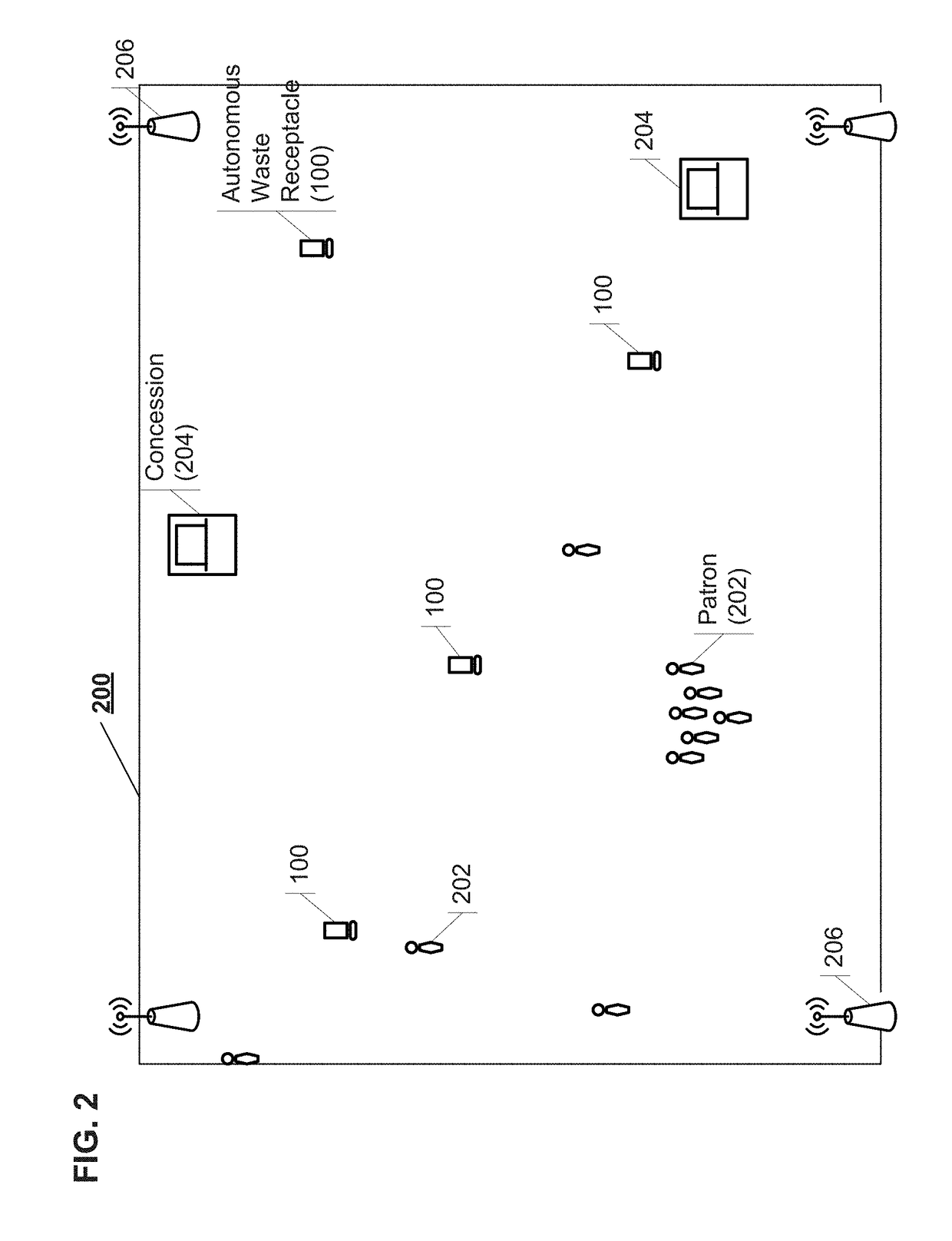Autonomous resort sanitation
a technology of autonomous resorts and sanitation, applied in the direction of process and machine control, refuse collection, instruments, etc., can solve the problem that the patrons are likely to litter
- Summary
- Abstract
- Description
- Claims
- Application Information
AI Technical Summary
Benefits of technology
Problems solved by technology
Method used
Image
Examples
Embodiment Construction
[0016]In the following detailed description, numerous specific details are set forth by way of examples in order to provide a thorough understanding of the relevant teachings. However, it should be apparent to those skilled in the art that the present teachings may be practiced without such details. In other instances, well known methods, procedures, components, and / or circuitry have been described at a relatively high-level, without detail, in order to avoid unnecessarily obscuring aspects of the present teachings.
[0017]The various systems and methods disclosed herein relate to autonomous sanitation and waste management. The autonomous sanitation and waste management provides for the automated removal of trash and other waste from a resort, amusement park, or other facility through the use of one or more autonomous waste receptacles such as robotic trash cans. The system, including the one or more autonomous waste receptacles, controls and routes the waste receptacles through the f...
PUM
 Login to View More
Login to View More Abstract
Description
Claims
Application Information
 Login to View More
Login to View More - R&D
- Intellectual Property
- Life Sciences
- Materials
- Tech Scout
- Unparalleled Data Quality
- Higher Quality Content
- 60% Fewer Hallucinations
Browse by: Latest US Patents, China's latest patents, Technical Efficacy Thesaurus, Application Domain, Technology Topic, Popular Technical Reports.
© 2025 PatSnap. All rights reserved.Legal|Privacy policy|Modern Slavery Act Transparency Statement|Sitemap|About US| Contact US: help@patsnap.com



